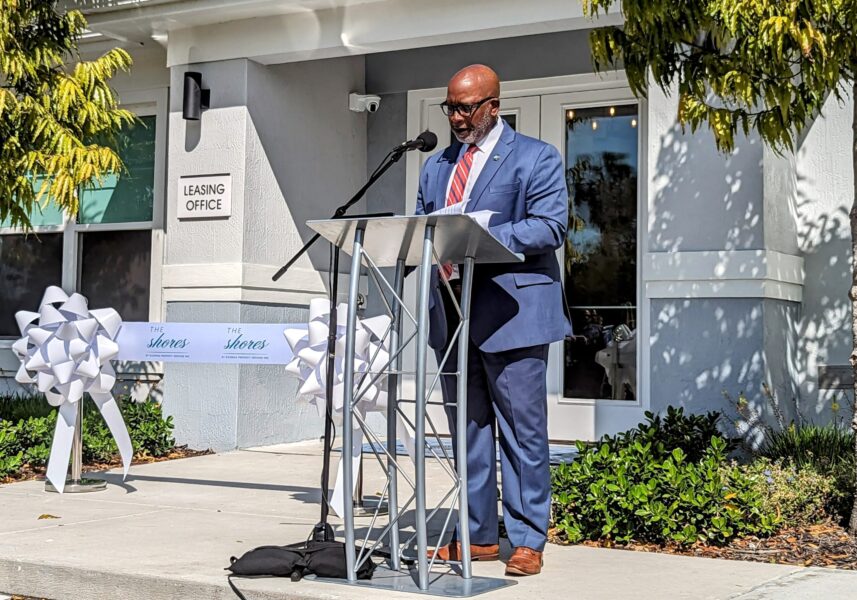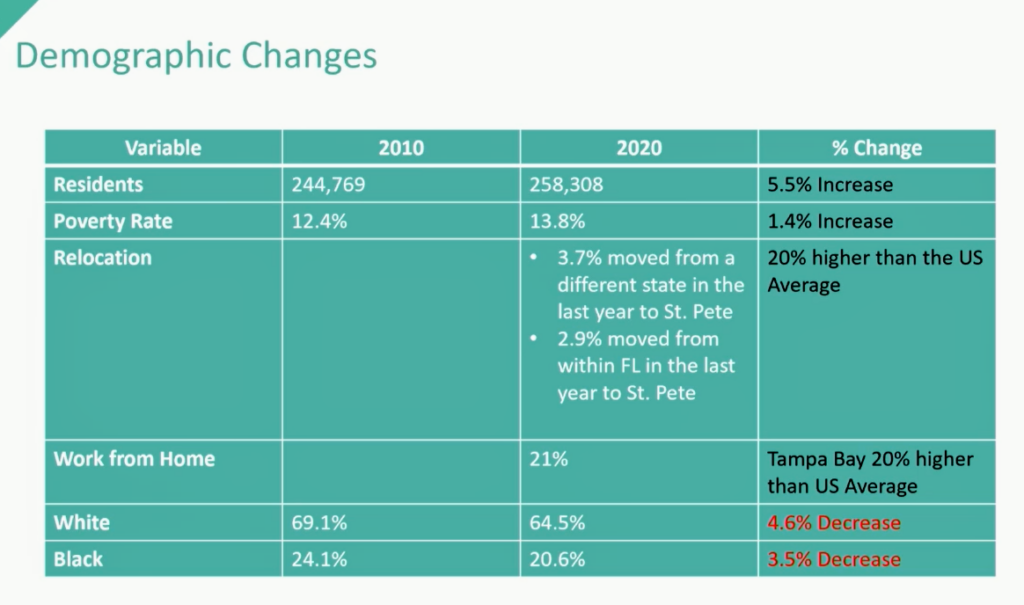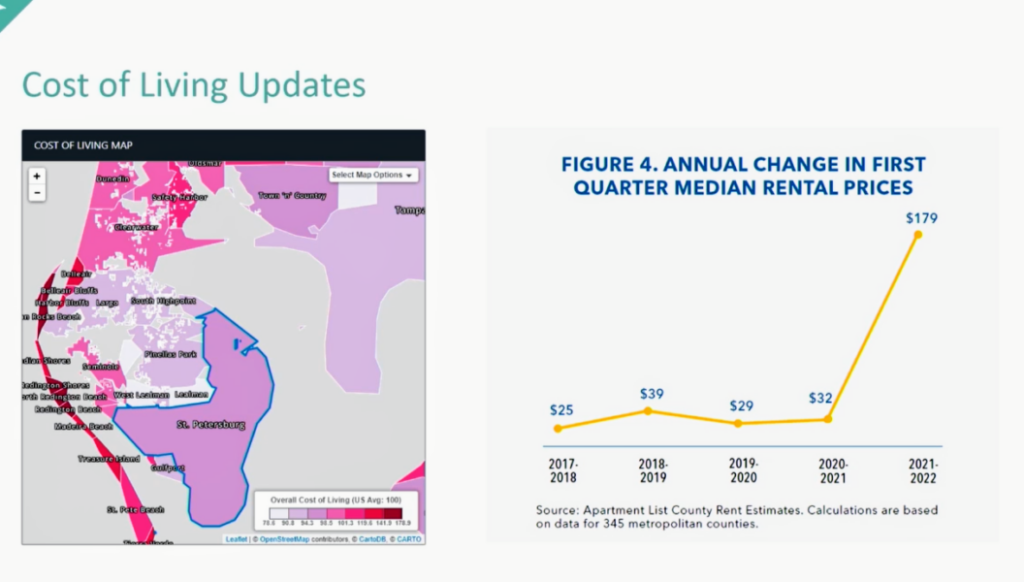Thrive
St. Pete housing data highights progress, challenges

New statistics showing development, housing costs, relocation and remote work data vividly illustrate how housing in St. Petersburg has drastically changed in recent years.
Numbers, as they say, do not lie, and city council members heard plenty as part of a comprehensive housing update. Amy Foster, community and neighborhood affairs administrator, led the presentation Thursday to the Housing, Land Use and Transportation Committee.
Some quantitative highlights show St. Pete has quadrupled its townhome and doubled its large multifamily development inventory since 2021. As a well-developed city surrounded by water, demolitions jumped 135%, from 161 to 378.
While smaller multifamily development – three to four units – production is down 33%, the total housing inventory increased by 70.5%. The city added nearly 1,500 new homes in 2022, but population growth, funding and market challenges remain.
“The reality is, at some point, we are going to have to have a conversation about how do we get another shot in the arm,” Foster said. “ARPA (American Rescue Plan Act) was a huge shot in the arm. That $27 million is building 387 units.”

Amy Foster, neighborhood and community affairs administrator. File photo.
Additional state and federal funding is needed to keep pace with new residents. Many people attribute St. Pete’s population increase to people relocating and working from home – and Foster highlighted new data that backs up those claims.
She relayed how 3.7% of city residents moved from another state, while 2.9% came from another part of Florida. That’s 20% higher than the national average.
In addition, 21% of Tampa Bay’s population worked from home, something not previously tracked by the Census Bureau. That is also 20% higher than the national average.
“You hear these kinds of anecdotal ideas that people are moving here, and they can work anywhere,” Foster added. “The data is actually showing us that.”
Gentrification is another hot topic in St. Petersburg, and she explained that the African American population is decreasing at a similar rate to their Caucasian counterparts. Foster said that is due to cities becoming more diverse, a national trend.
Census surveys now allow people to identify as two or more races, which she said is another factor.
St. Petersburg’s housing supply increased by 4.4% from 2010 to 2021. However, the vacancy rate also decreased by 4.5% over the same period, which creates “pressure on the market due to demand.”

A graphic showing St. Petersburg’s changing demographics. Screengrab.
The good news, Foster said, is that city officials met the “strong growth demand” threshold in 2022 for the first time in history. St. Petersburg added 1,489 units in 2022, just under the required 1,550.
“The production you’re seeing, with all the cranes in the air, is very real,” she said. “And if you compare that to the 20-year period previously, it’s double.
“We didn’t keep up for all those years, and now we’re trying to catch up, but it’s going to take some time.”
Foster said the housing market remains competitive, but she believes it might be hitting an equilibrium. The median home price in Pinellas County remains around $400,000.
However, home buying is historically unaffordable, as the local mortgage affordability index nearly tripled from January 2021 (100) to January 2023 (270). The average score is 130.
While St. Pete rents are still at record highs, the price increase dropped from 35% in 2021 to 15% in 2022. In addition, Foster highlighted how St. Petersburg’s cost of living rate was lower than beach communities, Clearwater and Dunedin, and only exceeds Pinellas Park and Largo.

A county cost of living comparison. Screengrab.
Although she said some data might suggest otherwise, Foster expressed her confidence in city officials remaining on pace to meet or exceed most of their housing goals. Those include creating and preserving 2,400 multifamily units; adding 200 unsubsidized workforce units; providing 150 single-family lots for new affordable homes; and building 300 accessory dwelling units.
However, Foster said market conditions could prevent city officials from providing purchasing assistance for 500 single-family homes. She explained that many people are waiting for mortgage rates to drop, and “this has nothing to do with not having enough funding in the pot.”
“The funding is available,” Foster added. “It’s simply a matter of people who are ready to make that jump to receive down payment assistance.”
She also noted that enabling 3,200 single-family homeowners to remain in place “doesn’t look as promising.” City programs helped 720 residents from 2020 through 2022, just 23% of the target.
City Administrator Rob Gerdes also expressed that market challenges are causing projects to stall, or developers to withdraw altogether. Foster relayed that city funding is just “one small piece” of creating affordable housing.
“We felt like the policy goal of building capacity was really important,” she said. “Now we are to a place where either that capacity has been built, or they’re just not able to do it. There is a significant need, right, but I think it’s important for us to be realistic about what is achievable.”








HAL Freedman
April 17, 2023at10:17 pm
Was the report as confusing and disjointed as this article about the report. I agree with the first comment about cherry-picking information. Also “St. Petersburg added 137,046 housing units in 2021…” I doubt that, with a population of 258,000 residents.
Carl Hebinck
April 15, 2023at7:22 pm
Interesting ideas. But almost apologetic. Wouldn’t a consideration of the ADU possibilities be the easiest and quickest solution to building up the stock of affordable housing? Where is the courage from the council? Where is that promised commitment to innovation?
Cedric A Ferrell
April 15, 2023at10:36 am
1. How are Airbnbs in Tampa Bay/Pinellas County effecting supply and demand?
2. It’s pointless to talk about affording housing in St. Petersburg when there’s a lack of affordable housing throughout the Tampa Bay metro area.
3. In this situation, I think two reports were needed, one for renters and one for home buyers.
4. I think the date used in this research was manipulated/cherry picked. I think the lack of affordable housing is worse than this report suggests.
5. I wish qualitative research would have been included in this study.
6. I wish the researchers would have survived either 500 residents in St. Petersburg or 500 residents in Pinellas County.
7. I think most people who earn less than 100k and who live in St. Petersburg/Pinellas County/Tampa Bay think housing is unaffordable.